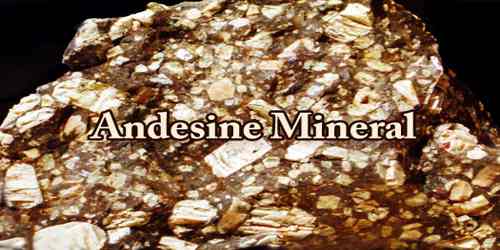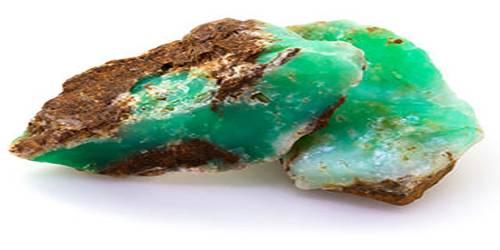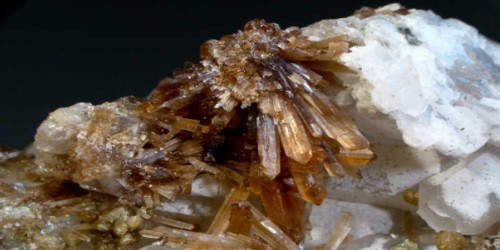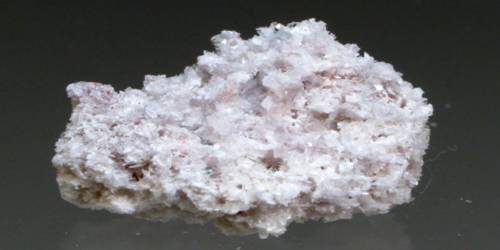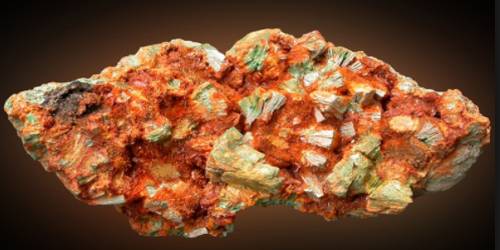Definition –
Andesine is a silicate mineral, and it was named after its original occurrence in the Andes Mountains of South America. By definition, Andesine must have 50 to 70 percent Sodium and 30 to 50 percent Calcium in the Sodium/Calcium crystal structure. It is a member of the plagioclase feldspar solid solution series. Its chemical formula is (Ca, Na)(Al, Si)4O8, where Ca/(Ca + Na) (% anorthite) is between 30-50%. The formula may be written as Na0.7-0.5Ca0.3-0.5Al1.3-1.5Si2.7-2.5O8.
Andesine belongs to the Plagioclase Feldspar group, an isomorphous solid solution series. Albite is one member, containing sodium and no calcium. The other end member, Anorthite, contains calcium and no sodium. Andesine is an intermediary member of this series. Andesine is considered by some authorities as a variety of Albite rather than a separate mineral. The acclaimed Dana’s System of Mineralogy lists Andesine as an individual mineral, whereas the IMA does not recognize it as individual mineral species, but rather a calcium-rich variety of Albite. Andesine is the primary feldspar constituent of the igneous rock Andesite.
The plagioclase feldspars are a continuous solid solution series and as such the accurate identification of individual members requires detailed optical study, chemical analysis or density measurements. Refractive indices and specific gravity increase directly with the calcium content. It is sometimes used as a gemstone.

Occurrence and Properties of Andesine –
Andesine was first described in 1841 for an occurrence in the Marmato mine, Marmato, Cauca, Chocó Department, Colombia. The name is for the Andes due to its abundance in the andesite lavas in those mountains. Large crystals are found in the San Gabriel Mountains (Los Angeles County), California. Other localities are the Crestmore Quarry, Riverside County, California; Goodall Farm, Sanford, York County, Maine; Mont Saint Hilaire, Quebec, Canada; and Portland, Victoria, Australia.
It is mostly found in magmatic and metamorphic environment. It typically occurs in metamorphic rocks of granulite, usually showing antiperthite property. It occurs in the form of intermediate igneous rocks such as Diorite, Andesite and Syenite. This substance is also found as detrital grains in sedimentary rocks. This chemical is closely related with Quartz, Potassium Feldspar and Magnetite.
A fairly new gemstone shrouded in mystery, andesine is believed to have been discovered in the Congo near the Nyaragongo Volcano sometime in 2003. The gemstone’s name comes from the Andes of South America. Andesine was originally traded without disclosure of color enhancements. Much of what was originally introduced to the gemstone market as andesine is not truly andesine and is actually enhanced labradorite, a fellow plagioclase feldspar. Andesine has a faint metallic schiller called labradorescence and exhibits a range of color known as pleochroism.
Andesine has a lovely red, reddish pink, and orange-pink color. This pretty color gave it a unique position as a new gemstone, because can rival the color of other more valuable red gemstones. However, it is still soft for a gemstone, and it is prone to cracks from pressure. A few examples of Andesine may even exhibit a color-changing effect in different lighting.
Andesine is so similar to labradorite, the gemstone has similar metaphysical capabilities. It’s also believed andesine has abilities closely related to sunstone. Andesine is associated with the heart chakra and is used to dispel negativity while providing clarity to one’s thoughts. According to metaphysical beliefs, andesine is also a grounding stone that can help ease stress. There are no zodiac signs tied to andesine.
Some of the physical properties of the substance are as follows:
Density: 2.66 and 2.68. It has an average density of 2.67.
Specific Gravity: 2.68 to 2.71.
Hardness: On Mohs scale is 6.25.
Transparency: It is transparent, subtransparent or translucent.
Luster: vitreous to dull if weathered.
Luminescence: It is non-fluorescent.
Magnetism: Nonmagnetic in nature.
Streak: white streak.
Cleavage: Good cleavage.
Fracture: It is uneven and conchoidal.
Birefringence: 0.0085
The origin of Andesine gemstones is uncertain. The original source where this gem was supposedly discovered in a natural, untreated state is in the Congo, near the Nyaragongo Volcano. The source for the diffused material is the Inner Mongolia of China.
Chemical Composition of Andesine –
The mineral consists of Sodium (5.14%), Calcium (5.97%), Aluminum (14.06%), Silicon (27.18%) and Oxygen (47.65%). It belongs to Tectosilicates subclass and Plagioclase Feldspars group. The Plagioclase group refers to minerals that include in their chemical composition from pure Albite to pure Anorthite.
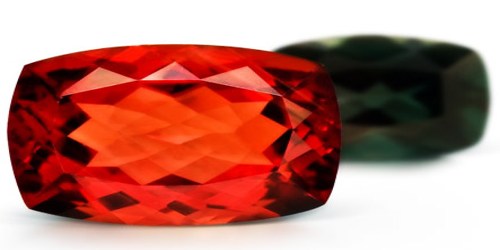
Uses of Andesine –
Andesine is chiefly used as a gemstone. Earlier, this gemstone was supposed to be better when left untreated. Today, however, heat treatment is commonly used to process this material and bring out its true color. The gemstone is also used in engraving and in artworks like decorative boxes. This stone is also used in the ceramic industry and in tiles, stones, and bricks.
Andesine should not be confused with Sunstone, which is a natural reddish feldspar gem. Sometimes Andesine gems are intentionally mislabeled as Oregon Sunstone to promote higher prices. Sunstone can easily be distinguished by its glitter effect or aventurescence. The red gemstones Ruby, Spinel, and Rubellite Tourmaline are all harder then Andesine.
Information Sources:
